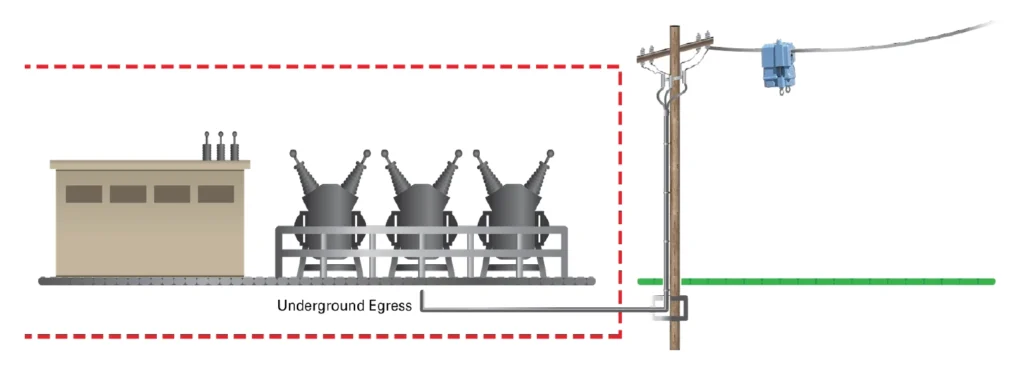Monitoring Feeders Just Outside Substations
Distribution utilities may not have communications to all substations. For some smaller substations it may not be cost effective to add communications and automation, or substations may be owned by a transmission and generation utility. Intelligent line sensors are a cost-effective way to add monitoring to feeders exiting these substations.
Sentient Energy’s Grid Analytics SystemTM
Sentient Energy’s flagship intelligent line sensor, the MM3ai can be installed on overhead lines just outside the substation perimeter. The MM3ai sensors measure load and fault currents with +/- 2% accuracy up to 10 kA and can sense loss of source. Equipped with GPS to ensure accurate location and time stamping, the line sensors send fault notifications and load data to the Ample® Analytics Platform for visualization and analysis.

How It Works
With Sentient Energy MM3ai overhead line sensors deployed just outside of substations distribution utilities can see current levels on feeders for a good indication of the status of the substation. This additional visibility is quickly and easily created due to several advantageous design characteristics of the Grid Analytics System:
- Integrated communications – Sentient Energy’s overhead line sensors include built-in cellular or RF Mesh communications. By eliminating the need for installation of communication gateways near each sensor location, sensor deployment is simplified.
- Sensor powering – The MM3ai sensors are line powered and deployed on feeder lines with 10A or more of continuous current.
- Ample Analytics Platform – Ample software collects data from sensors and provides visualization of the sensor network and system data. When a fault occurs the MM3ai sensors immediately notify Ample of the fault and capture waveform data at 130 samples per cycle for fault analysis.
